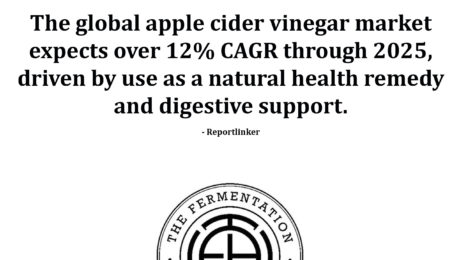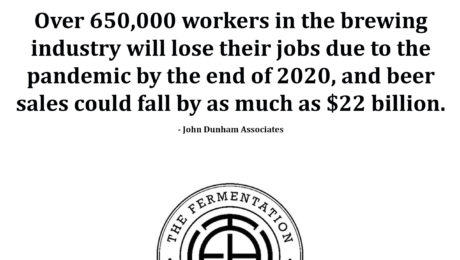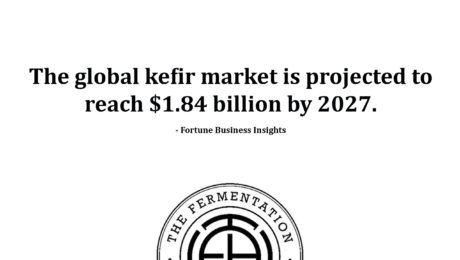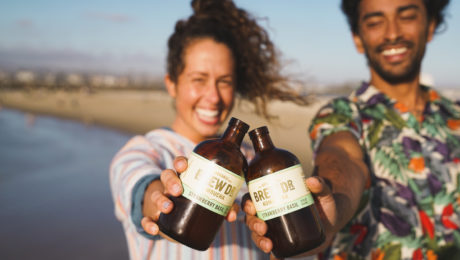What Can Hard Kombucha Learn from Craft Beer?
As hard kombucha continues to top “best of” lists for 2020’s most popular alcoholic drink, brewers must find ways to differentiate themselves in a crowded marketplace.
“If you’re thinking about coming into hard kombucha, my main point to you would be you’re not in the kombucha business anymore, you’re in the alcohol beverage business now,” says Bart Watson, chief economist for the Brewers Association (a trade group for small craft brewers). “You have to think about this competition more holistically than just within hard kombucha because, as we’ve seen in recent years, customers don’t think in neat categories as they used to.”
The percent of Americans who drink alcohol has remained fairly static over the years (Gallup polls indicate between 60-70%), but what they’re drinking has changed. Beer is losing favor with consumers, and other hard, fermented drinks — like kombucha, cider and mead — are now climbing in the craft brewing market.
“If (people) are drinking more of one thing, they’re drinking less of another,” Watson says. “You’re not going to add to the drinking, you’re just going to have to take from someone.”
Watson shared this data during the “Trajectory of Craft Brewing” panel at the Kombucha Brewers International (KBI) Virtual KombuchaKon 2020. Hannah Crum, president of KBI, said kombucha is a craft beverage, too. She added: “Hard beer has paved the way for hard kombucha. It’s opened up people’s idea to the concept of craft, and kombucha can thankfully take advantage of people’s knowledge of craft.”
Watson suggests four lessons from the craft beer world that hard kombucha brands can use to grow.
1. Consumers Crave Experiences
If you want to succeed in the hard kombucha industry, you must have on-premise sales.
Sales of craft beer are about 25% on-premise, and are especially strong in experiential channels — tasting rooms, music festivals, sporting events or even ax-throwing clubs. These are entertainment-driven settings where people can experience an event while drinking (but watch those axes!).
“This means they’re not just going to drink, but going to do something and drinking while doing it,” Watson says. “Many of the reasons that people say they go (to a brewery) is less about the product and more about the experience you provide.”
Over 50% of craft drinkers purchased more of a product after visiting the tap room, driven by having had a good experience.
“Kombucha tap rooms are going to be part of that experience that helps build the market and educate consumers about the product,” he adds. “This has been a challenge for a lot of distributors, but I actually think this is an opportunity for a smaller segment like kombucha.”
2. Go Where the Consumers Are
Craft brewers are most successful in bigger cities where there’s already a base of craft drinkers. The growth in the craft beer industry is coming from these concentrated geographic areas.
The craft beer market has steadily expanded over the last 10 years, but growth has been strongest in the West. Kombucha has followed a similar pattern..
“The West is still the strongest place for growth, even if it’s in the highest market share,” Watson says. “Most of the growth has continued to come from the densest market.”
3. Consumers Trade Up
Craft hard kombucha will sell better than a value version. Over the last 30 years, consumers have been purchasing more craft, imported and super premium beer compared to simply premium or value versions. Drinkers are “upcycling” their preferred brands.
“This is true in a lot of industries right now, where they’re not necessarily drinking more product, they’re drinking better,” Watson says.
In the overall beer market in 2015, craft beer makes up over 40% of the dollar volume, while premium beer (like a BudLite or Miller Coors product) are 35% and value brands are 20%.. Compare that to the 1980s, when premium beer peaked at over 60% of the volume, value beer was around 30% and craft was under 10%.
4. Go High or Low with ABV
When making a hard kombucha brand, think about your alcohol levels. Alcoholic beverages with higher or lower alcohol levels sell better, what Watson called “a hollowing of the middle.”
Sales are higher for drinks below 5% ABV or above 7% ABV. This is part of the reason hard kombucha, cider and mead have climbed in sales, since the drinks traditionally have higher alcohol levels.
“This is a market that’s competitive and getting more and more competitive, but at the same time, there’s more and more niches popping up as the consumer base diversifies and more people look for a specific product,” Watson says.
- Published in Business
Apple Cider Vinegar Market Growing 12% through 2025
The global apple cider vinegar market expects over 12% CAGR through 2025, driven by use as a natural health remedy and digestive support. – Reportlinker
- Published in Business, Food & Flavor
Whole Foods Market Forecasts Top 10 Food Trends for 2021
Today, Whole Foods Market global buyers and experts unveiled their top 10 anticipated food trends for 2021 in the retailer’s sixth annual trends predictions. Hard kombucha, upcycled foods, leveled-up breakfasts and jerky made from produce are among the food influences expected to take off in the next year.
Each year, a Trends Council of more than 50 Whole Foods Market team members, including local foragers, regional and global buyers and culinary experts, compile trend predictions based on decades of experience and expertise in product sourcing, studying consumer preferences and being on the frontlines with emerging and existing brands. Significantly influenced by the state of the food industry, the 2021 trends report reveals some of the early ways the food industry is adapting and innovating in response to COVID-19 for a post-pandemic food world.
“There have been radical shifts in consumer habits in 2020. For example, shoppers have found new passions for cooking, they’ve purchased more items related to health and wellness, and more are eating breakfast at home every day compared to pre-COVID,” said Sonya Gafsi Oblisk, Chief Marketing Officer at Whole Foods Market. “Food trends are a sign of the times, and our 2021 trends are no exception.”
While Whole Foods Market’s predictions for 2020, including regenerative agriculture, new varieties of flour and meat-plant blends, continue to evolve, the 2021 trends represent what’s new and next for the coming year and what consumers should expect to see on the food scene.
Whole Foods Market’s top 10 food trend predictions for 2021:
WELL-BEING IS SERVED
The lines are blurring between the supplement and grocery aisles, and that trend will accelerate in 2021. That means superfoods, probiotics, broths and sauerkrauts. Suppliers are incorporating functional ingredients like vitamin C, mushrooms and adaptogens to foster a calm headspace and support the immune system. For obvious reasons, people want this pronto.
Try the Trend: Cleveland Kraut: Roasted Garlic, Gnar Gnar; Beekeeper’s Naturals B.Powered Superfood Honey; Om Mushroom Superfood Mighty Mushroom Broth; Navitas Organics Superfood+ Adaptogen Blend Smoothie Booster; Health-Ade Kombucha PLUS: Belly Reset, Beauty, Energy; fresh exotic citrus fruits like Buddha’s Hand
EPIC BREAKFAST EVERY DAY
With more people working from home, the most important meal is getting the attention it deserves, not just on weekends, but every day. There’s a whole new lineup of innovative products tailored to people paying more attention to what they eat in the morning. Think pancakes on weekdays, sous vide egg bites and even “eggs” made from mung beans.
Try the Trend: 365 by Whole Foods Market Atlantic Salmon (coming 2021): Hot Smoked, Cold Smoked; Just Egg Folded plant-based “eggs”; Whole Foods Market Dutch-Style Pancake Bites; Meatless Farm: Meat Free Sausage Patties, Meat Free Breakfast Sausages; 365 by Whole Foods Market Organic Gluten Free Pancake & Waffle Mix; Whole Foods Market Uncured Ham & Gruyère Cheese Egg Bites; Birch Benders Pancake Keto Cups: Chocolate Chip, Classic Maple; Breakfast Pizza – found at Whole Foods Market’s pizza venues in select regions
BASICS ON FIRE
With more time in the kitchen, home chefs are looking for hot, new takes on pantry staples. Pasta, sauces, spices — the basics will never be boring again. Get ready for reimagined classics like hearts of palm pasta, applewood-smoked salt and “meaty” vegan soup.
Try the Trend: Whole Foods Market Applewood Smoked Salt; Spicewalla Chai Masala spice; RightRice Risotto (coming 2021): Basil Pesto, Creamy Cracked Pepper; Acid League Living Vinegar: Meyer Lemon Honey, Strawberry Rose; Whole Foods Market Hearts of Palm Linguine; Otamot Sauce made with organic vegetables: Organic Essential, Spicy Organic; Upton’s Naturals Vegan Soup: Chick Tortilla, Italian Wedding
COFFEE BEYOND THE MUG
The love affair between humans and coffee burns way beyond a brewed pot of joe. That’s right, java is giving a jolt to all kinds of food. You can now get your coffee fix in the form of coffee-flavored bars and granolas, smoothie boosters and booze, even coffee yogurt for those looking to crank up that breakfast parfait.
Try the Trend: Jameson Cold Brew Irish Whiskey; Marge Granola Georgetown Coffee Nib Muesli (coming 2021); 365 by Whole Foods Market Coffee & Almond Protein Chewy Bites (coming late 2020); EVOLVED Coffee Keto Cups; Nancy’s Oatmilk Non-Dairy Yogurt – Cold Brew Coffee with Vanilla; Blender Bombs Coffee, Almond Butter & Cacao Smoothie Booster
BABY FOOD, ALL GROWN UP
Thanks to some inspired culinary innovation, parents have never had a wider or richer range of ingredients to choose from. We’re talking portable, on-the-go squeeze pouches full of rhubarb, rosemary, purple carrots and omega-3-rich flaxseeds. Little eaters, big flavors.
Try the Trend: 365 by Whole Foods Market new Organic Baby Food: Pear Strawberry Rhubarb, Apple Pumpkin Blueberry with Ground Chickpeas, Apple Butternut Squash with Ground Oats and Turmeric; Happy Baby Organics (coming 2021): Sweet Potatoes & Olive Oil with Rosemary; Purple Carrots, Cauliflower & Avocado Oil with Oregano; Pumpkin Tree Organic Mango Purée with Oat Fiber & Seeds + a squeeze of Orange; Once Upon a Farm Organic OhMyMega Veggie! with Ginger and Flax Seed
UPCYCLED FOODS
Peels and stems have come a long way from the compost bin. We’re seeing a huge rise in packaged products that use neglected and underused parts of an ingredient as a path to reducing food waste. Upcycled foods, made from ingredients that would have otherwise been food waste, help to maximize the energy used to produce, transport and prepare that ingredient. Dig in, do good.
Try the Trend: The Ugly Company: 100% Upcycled Kiwis, Apricots and Peaches; Pulp Pantry Pulp Chips (coming 2021): Barbecue, Jalapeño Lime, Salt ‘n’ Vinegar; Barnana Organic Banana Bites: Peanut Butter, Dark Chocolate Peanut Butter Cup; Renewal Mill: 1-to-1 Baking Flour made from okara, or upcycled soybean pulp; Spudsy Sweet Potato Puffs snacks: Vegan Buffalo Ranch; ReGrained SuperGrain+ Bars made with an upcycled blend of barley, wheat and rye: Manuka Honey, Cinnamon & Turmeric Immunity, Blueberry, Sunflower & Ginger Antioxidant
OIL CHANGE
Slide over, olive oil. There’s a different crop of oils coming for that place in the skillet or salad dressing. At-home chefs are branching out with oils that each add their own unique flavor and properties. Walnut and pumpkin seed oils lend a delicious nutty flavor, while sunflower seed oil is hitting the shelves in a bunch of new products and is versatile enough to use at high temps or in salad dressing.
Try the Trend: 365 by Whole Foods Market Expeller Pressed Walnut Oil; International Collection Pumpkin Seed Oil; 88 Acres Seed Dressing, Smoky Chipotle Dressing with Sunflower Seeds; 365 by Whole Foods Market Grain Free Cassava Flour Tortillas made with sunflower seed oil; innovative menu items from Whole Foods Market in-store venues like PLNT Burger’s Crispy Chik N Funguy Sandwich and Next Level Burger’s Tots and Fries, both made with organic sunflower seed oil
BOOZED-UP BOOCH
We tipped you off about hard seltzer bursting on the scene in 2018, and now alcoholic kombucha is making a strong flex on the beverage aisle. Hard kombucha checks all the boxes: It’s gluten-free, it’s super bubbly and can be filled with live probiotic cultures. Cheers to that!
Try the Trend: Strainge Beast Hard Kombucha: Ginger, Lemon & Hibiscus; Passion Fruit, Hops & Blood Orange; Juneshine Hard Kombucha: Blood Orange Mint, Acai Berry; BOOCHCRAFT Organic Hard Kombucha: Grapefruit Hibiscus; Kombrewcha Hard Kombucha: Ginger Lemon; Wild Tonic Hard Kombucha: Blueberry Basil, Mango Ginger; Jiant Hard Kombucha: The Original, Hicamaya; hard kombucha on tap at Whole Foods Market taprooms
THE MIGHTY CHICKPEA
You can chickpea anything. Yep, the time has come to think beyond hummus and falafel, and even chickpea pasta. Rich in fiber and plant-based protein, chickpeas are the new cauliflower — popping up in products like chickpea tofu, chickpea flour and even chickpea cereal. That’s garbanzo-bonkers.
Try the Trend: Biena Vegan Ranch Chickpea Puffs; Peppi’s Greek Gourmet GreekFreez frozen dessert made with chickpea aquafaba: Orange Chocolate, Mint Chocolate Chip; Chikfu Chickpea Tofu; Three Wishes Cereal made with chickpeas (coming 2021): Cinnamon, Honey; Siete Family Foods Chickpea Flour Tortillas; Banza Pizza made with chickpeas: Margherita, Roasted Veggie
FRUIT AND VEGGIE JERKY
Jerky isn’t just for meat lovers anymore. Now all kinds of produce from mushrooms to jackfruit are being served jerky-style, providing a new, shelf-stable way to enjoy fruits and veggies. The produce is dried at the peak freshness to preserve nutrients and yumminess. If that’s not enough, suppliers are literally spicing things up with finishes of chili, salt, ginger and cacao drizzle.
Try the Trend: Snack Jack Jackfruit Jerky: Cracked Pepper, Sweet Chili; Pan’s Zesty Thai Mushroom Jerky; Solely Organic Fruit Jerky: Mango with Chili & Salt, Pineapple with Chili & Salt, Mango with Drizzled Cacao; Wild Joy Banana Jerky: Original, Chipotle Lime, Ginger Teriyaki; Fat Top Farm Spicy Mushroom Jerky (coming late 2020)
“Try the Trend” products include a variety of items available now or coming to Whole Foods Market stores for either local or national distribution. Shoppers can seek out trending products by visiting Whole Foods Market on Amazon.
About Whole Foods Market
For 40 years, Whole Foods Market has been the world’s leading natural and organic foods retailer. As the first national certified organic grocer, Whole Foods Market has more than 500 stores in the United States, Canada and the United Kingdom. To learn more about Whole Foods Market, please visit https://media.wholefoodsmarket.com.
- Published in Food & Flavor
Alternative Protein Grows with Microbial Fermentation Technologies
Microbial fermentation is emerging as the “third pillar in the alternative protein industry,” alongside cell-culture and plant-based, according to the Good Food Institute. In 2020, protein alternatives made using microbial fermentation have attracted $435 million in investment capital. The institute released a 72-page report on fermentation in the alt protein industry and noted that its “potential is still largely untapped.” Nature Fynd CEO Thomas Jonas points out it takes years to grow animals, and months or years to grow plants, but microbes can double their biomass in a few hours. Are these novel fermentation techniques to produce animal-free meat and dairy improving our food system or too big of a departure from traditional fermentation?
Read more (Food Navigator)
- Published in Science
Brewing Industry Takes Big Hit in 2020
Over 650,000 workers in the brewing industry will lose their jobs due to the pandemic by the end of 2020, and beer sales could fall as much as $22 billion. – John Dunham Associates
- Published in Business
Projections of Global Kefir Market
The global kefir market is projected to reach $1.84 billion by 2027. – Fortune Business Insights
- Published in Business, Food & Flavor
Sales of Kombucha Grow, But at a Slower Pace
During a year of dramatically changing consumer grocery-shopping patterns, kombucha sales are continuing to grow, but at a slower pace. U.S. retail sales of kombucha sales grew 2.4% over the twelve months though mid-July 2020, to $703.2 million. But this growth rate compares to 9.8% in the prior 12-month period.
Distribution remains strong in conventional stores (up 5.1%), but is decreasing in kombucha’s core, natural stores (down 6.1%).
“This is a piece that’s one to watch and one to manage because it’s one of the better indicators of category health,” says Perteet Spencer, vice president of Strategic Solutions for SPINS (retail data provider). Spencer shared the stats at KombuchaKon 2020. The natural channel, Spencer explained, is where consumer shopping trends emerge.
As grab-and-go shopping and restaurant dining declined during the COVID-19 pandemic, so did kombucha sales. “COVID has hurt,” says Spencer, “but I expect this category will certainly rebound.”
KKon 2020, organized by Kombucha Brewers International (KBI), was a virtual event this year after KBI’s annual in-person KKon in April was cancelled due to the coronavirus outbreak. Hundreds of kombucha professionals from all over the world joined digitally for the two-day conference.
Six months into the coronavirus outbreak and more consumers are purchasing health products. Hannah Crum, KBI president, says education in the kombucha industry is more important than ever as consumers seek health drink options.
“I think this is a really vital opportunity for us as fermentationists,” says Crum. “This is teaching us that health is paramount…this is where kombucha’s opportunity thrives.”
The conference marks the first time industry leaders have met since KBI announced their new kombucha Code of Practice, the first set of safety and quality standards for the industry.
Kombucha has infiltrated mainstream retail, with 83% of stores selling kombucha in some form — a statistic Spencer said is especially impressive. “Rarely do we see full saturation of categories,” she adds. “Certainly there’s room to expand there.”
The retail category SPINS tracks represents sales of refrigerated kombucha and fermented beverages. Kombucha is competing with other adjacent fermented drinks, like cider, functional juices, teas, kvass, vinegar drinks and coffee/cold brew. Kombucha still dominates, representing nearly 90% of the category sales.
The entire beverage industry is a $122 billion market, comprising 16 categories, with soda and carbonated beverages the largest portion ($30.3 billion). Categories with the highest growth rates include plant-based milk (13.4%), creams and creamers (11.1%) and performance beverages (8.9%).
“As you can see, it’s incredibly crowded,” Spencer says. “We’re seeing beverages are playing a lot of different roles. This is important because the consumer data would suggest that consumers are not buying one beverage type.” For example, she says a consumer may want a protein drink in the morning, a yerba mate in the mid-day for a boost, then a kombucha at the end of the day.
“We are seeing the rise of new digestive health benefits and formats really gaining traction, as kombucha and its derivatives scale mainstream,” Spencer says.
Consumers are looking for diverse, nutrient-rich ingredients and flavors. Wellness-focused brands with clean ingredients and holistic ideals are “the engine of growth for the natural products industry…the future is bright for these spaces.” Spencer notes “90% of kombucha brands live and shine in this space.”
The top-selling kombucha flavors in the natural channel include mixed fruit, pineapple and coconut. In the conventional channel, top flavors are ginger, berry and mixed fruit. Top-selling brands are: GT Kombucha, Kevita, Health Ade, Brew Dr. and Humm.
Hard kombucha brands also thrived in the past year. Prime examples are: Boochcraft ($8.6 million in sales, 72.6% growth), June Shine ($6.1 million, 211.2%) and Flying Embers ($3.5 million, 1,398.1%).
Spencer says another major opportunity for kombucha brands is selling larger-size growlers. The 48-ounce size growler is the second-fastest-growing kombucha size. Shoppers are shifting to purchasing larger sizes as they stock up during the pandemic.
“This is such a resilient industry,” Spencer says. “What an incredible opportunity to move with your consumers as they embrace the fundamentals of what kombucha delivers, but also experience it in slightly different ways. People are looking for new experiences and a sense of escape, and so I think (kombucha) brands are uniquely positioned to enter that conversation.”
- Published in Business
Tofu Sales Increased
Year-over-year tofu sales increased 40% in the first half of 2020. – Nielsen Data
- Published in Business, Food & Flavor
Chocolate Sales Skyrocket During Pandemic
Chocolate sales have skyrocketed during the pandemic. Americans spent $3.7 billion on chocolate during the 17-week period that ended June 27,up 6.3% from last year. – Nielsen Data
- Published in Business, Food & Flavor
A Venn Diagram of Food, Biology & Chemistry: A Conversation with Johnny Drain
Johnny Drain is the guru for helping chefs around the world innovate flavorful dishes. A chemist with a PhD from Oxford and a passion for cooking, Drain found fermentation was the optimal intersection of food and science.
“Fermentation was this focus of this venn diagram that incorporated food with some necessity to understand biology but also chemistry,” Drain says. “Fermentation was this sweet spot where I could apply my background in science with this passion and knowledge and aptitude for cooking, flavor and taste. I realized if I wanted to apply this rich educational history that I was fortunate to have access to, fermentation was this ideal sphere where I could do that.”
This cross-section is where Drain finds his diverse career — as an in-demand food research and development consultant. He’s currently advising chefs in renowned restaurants all over the globe and serving as co-editor of MOLD magazine.
The Fermentation Association spoke with Drain, who is based in London. Below is the first of our two-part Q&A with Drain. Part 1 focuses on his interest in fermentation, and how he sees fermentation transforming the culinary world. Part 2 features some of Drain’s recent fermentation consulting projects and his drive to use fermentation to create a sustainable global food system.
The Fermentation Association (TFA): What got you first interested in fermentation.
Johnny Drain (JD): I am a scientist by background. I did chemistry as an undergraduate, then I worked for a company in finance, which I don’t really talk about. It was on the cusp of the financial crash, 2006-2008, so it was quite an interesting time to be working in that sector. During my lunch breaks, I was reading recipe books and reading restaurant reviews and looking at the world of science. I was thinking about doing a PhD, and I ended up quitting finance because I realized this was not how I wanted to spend my life, for 12 hours every day. I went back and did a PhD in something called material science, which is a cross between chemistry and physics. Still nothing actually to do with food, I was looking at how atoms interact in types of steel, and building computer models of how to understand that and how to apply that to making car chassis. So still, it was very far away from the world of making food, but always I had this dream of becoming a chef or maybe having a restaurant at one point in my life.
At the end of my PhD, I was fortunate to study in Oxford in this very beautiful place in the heart of England in this very rich academic history surrounded by all these very clever people and beautiful buildings. I realized, instead of becoming an Oxford don with maybe a tweed suit and patches on my elbows, I would sack that all in, having climbed up a few rungs of that ladder, and basically start staging (unpaid restaurant internship) and working in kitchens for free. I even worked as a pot washer in one kitchen in London. I really jumped back in at the deep end and pursued this dream of becoming a cook or a chef.
I did that for a little while and realized first, becoming a chef is a young person’s game. And second, I’m 6’2’’ and have a bad back and, as a chef, you’re standing on your feet all day and that was not going to be a physically viable way for me to make a living. I had to combine my scientific nouse (intellect) with my passion for food.
For me, the interesting thing is I never see these things as mutual exclusive, they’re all related and interconnected. I ended up doing what I do now, which is helping restaurants and bars and food brands, consulting and teaching restaurants and chefs how to understand these things. As I see it, I’m unlocking their artistry and storytelling ability through this understanding of science. All of these things are interconnected. And fermentation is this particularly excellent example. It has to do with flavor and food, but it also has to do with people and tradition and culture, it has to do with artistry and storytelling, you can’t really do one without the other. Science, that biology and chemistry, is really integral to unlocking the creative, artsy-fartsy elements to these types of food.
TFA: When you partner with these different chefs and kitchens, what expertise are they looking for from you?
JD: Especially these days, it’s different from five years ago when I first started doing this type of work. Five years ago when you’d go into a kitchen, people really wouldn’t know what fermentation was. And often they wouldn’t be interested in it, or they wouldn’t understand why might a scientist be able to help me make better, tastier food or drink. But now, most people I work with, they know that and they’ve already dibbled and dabbled a little bit with some of these ferments. Let’s say they’ve made some kimchi or sauerkraut or some kombucha. Really what they want now, especially the high end places, they’ve dibbled and dabbled and they want to make sure that, A, what they’re doing is safe and isn’t going to kill anyone, which is very sensible. But secondly, they want that kind of X factor, they want the ability to unlock that real deep magic. That’s when I go in.
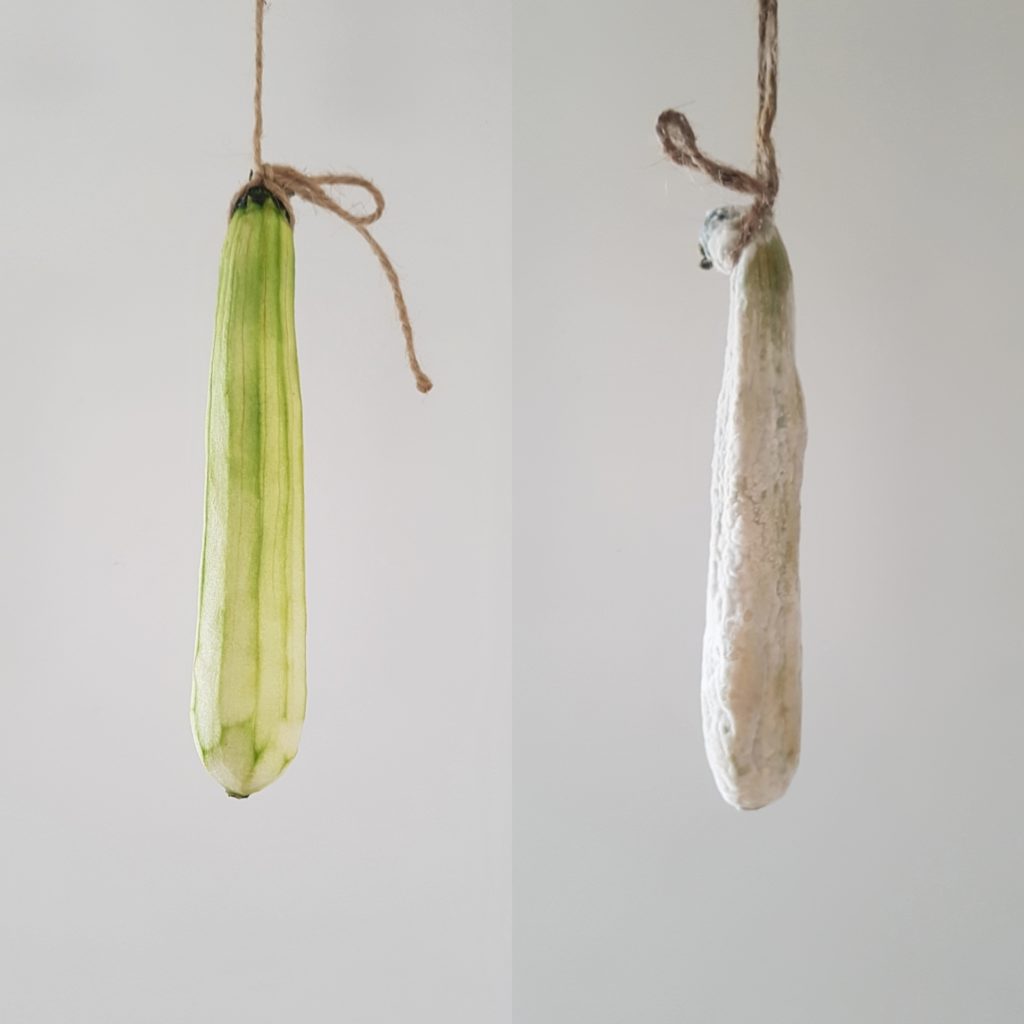
I was just in Lithuania last week working with this really great restaurant called 1918. Michelin doesn’t cover Lithuania, give it two years I expect, and they’ll get at least 1 star, possibly 2. It’s really high end, great quality food. And they’re trying to play around with egg yolks and koji, which is basically this aspergillus, this war horse of Japanese food culture that’s also present in Chinese and Korean cultures as well. They want to be able to have that scientific rigor and have someone to come in “Pick that lock,” as I describe it, and be able to unleash their creativity so they can put this into action in their dishes. They’re wanting to tell these stories about Lithatian food culture and use this food they’re growing on this farm about 50 minutes outside the capital.
TFA: That sounds very rewarding, to help different restaurants create new dishes.
JD: It is. My role is this enabler, picking that lock, unleashing people’s creativity and helping these chefs. Really, fermentation is just a tool. In many ways, the way we see knife or a chopping board, it’s a tool. If you try and cook without those tools, you’re doing yourself a great disservice. You’re limiting what you can do, you’re limiting your creativity. Fermentation really is just another example of a type of tool. In five or 20 years, people will just see some of these fermentation techniques just as the way they see a knife. It’s just this tool. And by empowering these chefs with these tools, I’m helping to unleash that creativity. When you unleash people’s creativity they get very excited and very passionate.
TFA: Why do you think fermentation has become such a bigger interest among chefs?
JD: The funny thing about fermentation is we all eat fermented products, but we don’t realize it. You could read off a list that lasts five minutes. Bread, all booze, chocolate, coffee, vinegar, etc. It’s just that most of those products, we’ve become so used to them because there are these staples of everyday life that we don’t realize they’re fermented. Also partially because the way the food systems now work, that work of creating our own bread or beer or cider, it’s now been outsourced for most people in much of the world to some other party. So we’re not making these products at home where our grandmothers, our grandfathers, would have been. My grandmother would have understood that bread, wine, cider was a fermented product because she was making those or her grandmother was making those. Whereas I grew up in a household where we bought all of those things and somebody else made it. All those steps had already been performed.
First, there’s this awakening of realizing much of the food we know and love is fermented. And second, from a chef, foodie world, there’s been a renaissance in fermented food because they offer this exciting flavor profile that chefs always want. Chefs are looking for the new. Especially in the last 20 years, with that modernist cuisine movement, people reached science to kind of process foods. That’s where the novelness came. In the sort of last 10-15 years, we saw this move towards what new ingredients do we have on our doorsteps, foraging, this local-vore movement of people rediscovering what incredible food products are on their doorstep. Now people are asking “Where can we discover new flavors that are on our doorstep that are new, now that everyone has foraged everything. Where is the newness? Where can I reach out to access this incredible, novel flavor profile?” Fermentation is this toolkit that gives you access to these incredible new flavors. It’s the other frontier.
When you talk about what’s on our doorstep, we get into this idea of microbial territory.
What microbes are unique to Britain or unique to France or unique to Argentina? Actually, the microbes are as unique and defining of place and of the food culture in a place as the grapes that grow or the cheeses that we make or the strains of wheat varietals that might grow in a place. Microbes are sort of this hidden category of food that have shaped the food that we eat in the place that human beings live as much as any other kind of meat or dairy or fruit or vegetable.
TFA: What do you think is the future of fermentation in the culinary world?
JD: So the focus now is very much on people within the food industry looking for what produce they have in their backyard or in their country or their culture and how do they ferment those? I think, currently, the sort of toolkit of fermentation is dominated by a couple of prevailing techniques or cultures, microbiological cultures.
I think there is so much to learn from slightly undiscovered fermentation food cultures in the world. Ones that really haven’t had a bright light shone on them — like the Japanese, fermentation has had quite a bright light shone on them. And that’s amazing because Japanese fermentation culture is amazing and incredibly rich, so lots of people around the world have learned a lot from it. I think the next frontier for me is going to be people looking at fermentation in Sub-Saharan Africa, fermentation in the Indian sub continents. And those fermentation cultures are currently not that well understood, certainly by people outside those cultures, and they’re not documented in clear and concise ways in much of the way now that that Japanese food culture and Western European fermentation food culture has been documented. I think people are realizing there’s all these incredible, beautiful, rich ferments that we just don’t know about and don’t understand in Sub-Saharan African and the Indian subcontinents. I’m currently working on projects with people who are from those countries and cooking the food of those cultures. There’s just so much for us to learn.
TFA: What’s been the wackiest or funkiest food thing you’ve ever fermented?
JD: On the menu at one point at Cub (restaurant in London where Drain worked in research and development), we had a pest season where the head chef was trying to base the menu around things that are perceived as pests or invasive species.
In the UK we have this animal called the Reeves’s muntjac. It came originally from India. This guy called Reeves visited India as this colonizing force and came back and had, as a rich guy, a bunch of these species of flora and fauna as pets and novelties, one of which was this Reeves’s muntjac. It’s a very small, muscular deer. It’s bigger than a bulldog, but as muscular, then with a head of a deer and these horns. You see them driving along British country lanes at night and they look very scary, they basically look like devil dogs. They look like the harbingers of the apocalypse, sort of like something very bad is going to happen as you’re driving down the fog down this dark, British country lane. They’re very weird, scary and other worldly. They’re a pest and they outcompete the native species. So they are hunted to control their numbers.

So we made a muntjac garum. Using this technique of garum, which is a Roman word for fish sauce, we created this umami-rich, meaty garum. And that got used to dress these various, wonderful, meaty dishes. We did deer faggots. A faggot in the culinary sense of a word is the the offal of meat wrapped in the coals, part of the intestines, and basically pan fried. It’s a very traditional British dish. We made these deer faggots and dressed it in this muntjac garum.
That was quite a weird but delicious example of that whole 360 idea of sustainability in not just the techniques that we use but the produce we’re using. How do we use invasive species?
The conversation with Johnny Drain continues in our September 16 newsletter. To find out more information about Drain, visit his personal Instagram and the Instagram of MOLD magazine.
- Published in Food & Flavor


